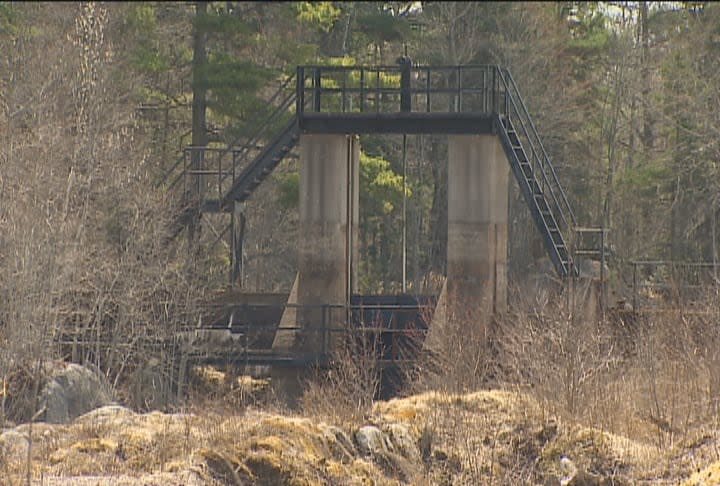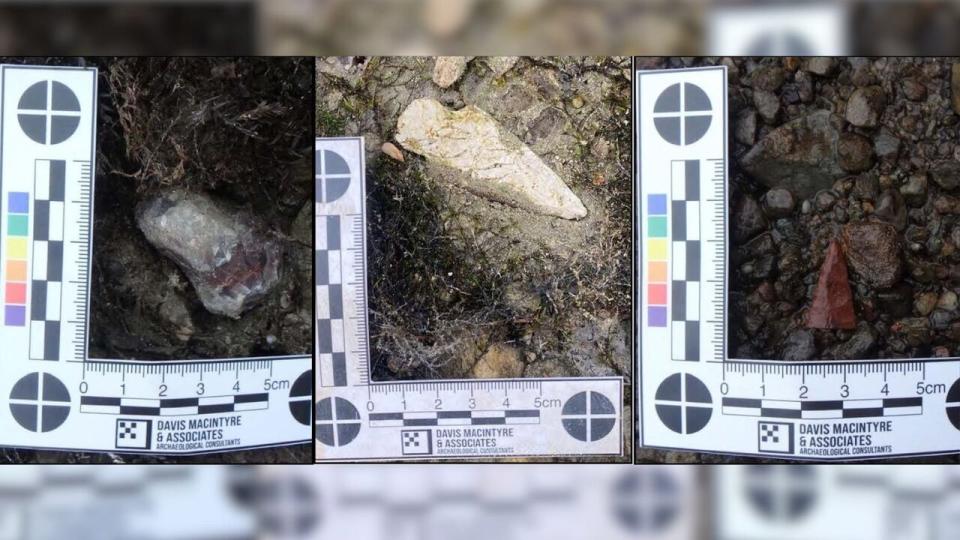Mi'kmaw protocols aim to steer development in archaeologically sensitive areas
A Mi'kmaw organization in Nova Scotia has released new protocols it hopes will guide development in archaeologically sensitive areas and make conversations with federal and provincial regulators easier.
The Mi'kmaw Archaeological Protocols, finalized after five years of consultation with Mi'kmaw communities around the province, would apply in situations where someone stumbled upon artifacts on a construction site — anything from pottery to items like hunting or woodworking tools, to cases like Nova Scotia Power's Gaspereau dam project where work was halted when more than 300,000 Mi'kmaw artifacts were found.
But it would also apply before artifacts are uncovered, when there's development happening on traditional lands or in proximity to a Mi'kmaw community, or even in cases where developers want to work in good faith with the Mi'kmaq.
"Archaeology is such a critical part of identity because archaeology is the most democratic record of the past, of what has happened and what people have thought, it's the record that people have left themselves of themselves," said Heather MacLeod-Leslie, the senior archaeologist and research manager with Kwilmu'kw Maw-klusuaqn (KMK), a group that negotiates on behalf of Mi'kmaw chiefs.

The protocols were produced by the group in 2019 under the leadership of Wasoqopa'q (Acadia) First Nation with support from KMK archaeologists. Mi'kmaw communities were given the chance to provide feedback before the protocols could be approved by the Assembly of Nova Scotia Mi'kmaw Chiefs.
'This is all Mi'kma'ki'
The protocol document lays out several expectations and recommendations, including:
The Assembly of Nova Scotia Mi'kmaw Chiefs must be consulted on all proposed archaeological projects unless an archaeological management mechanism that meets with the assembly's approval already exists.
Archaeological fieldwork in Mi'kmaw traditional territories must begin with appropriate Mi'kmaw cultural practice.
Mi'kmaq will form part of the archaeological project team.
Grand Council will have a recognized role in archaeological projects that respects their capacity as leaders of the Mi'kmaw Nation.
"If you are doing something in Mi'kma'ki with an archaeological conversation to be had, this document can be used to help support a productive dialogue," said MacLeod-Leslie.
"The intention is that these are inter-jurisdictional because it doesn't matter what level of colonial government is involved, this is all Mi'kma'ki."
Duty to consult
The Supreme Court of Canada has set out specific scenarios where there's a legal obligation to consult First Nations, Inuit and Métis, including situations that infringe on Indigenous and treaty rights.
MacLeod-Leslie said in cases where a construction project may contravene a treaty right, there's a legal obligation to consult on Mi'kmaw archaeological heritage.
"That is not happening in Nova Scotia with archaeological regulations in provincial jurisdictions, and it's a real conundrum," she said.

When a project starts without considering that, there's a risk it could be stalled midway through. The new protocols could prevent this, she said, because developers would have already done the required consultation work.
"Some archaeologists are already involved in, you know, activities that really reflect the spirit and specifics of this document, so they're kind of ahead of the game."
Parks Canada is one of the proponents that in recent years has committed to full engagement with the Mi'kmaq, added MacLeod-Leslie.
Keith Mercer, who works for Parks Canada as the cultural resource manager for mainland Nova Scotia, said the federal agency has been developing a collaborative archaeology working model with Nova Scotia Mi'kmaq since 2016.
"It's very integrated, multidisciplinary. It's a good working forum to discuss projects, planning, impact assessments, mitigation involving community, involving youth, all sorts of things," said Mercer.
'There's no more important relationship'
He said the work stemmed from a project that didn't go too well, but the two groups committed to collaboration and having further conversation.
"The relationship between Parks Canada and the Mi'kmaq of Nova Scotia is strong and it's growing … I would say there's no more important relationship for us than with the Mi'kmaq," said Mercer.
Nova Scotia's Department of Public Works, the provincial Department of Communities, Culture, Tourism and Heritage and the Halifax Regional Municipality declined to comment on the new protocols.
Nova Scotia Power, which recovered Mi'kmaw artifacts during the 2021-22 refurbishment of the Tusket main dam, said in an emailed statement that it works closely with Wasoqopa'q First Nation and the Assembly of Nova Scotia Mi'kmaw Chiefs to protect Mi'kmaw archaeological heritage.
"The lands and waters used by the Tusket hydroelectric system have been home to the Mi'kmaq since time immemorial," the utility said. "The Mi'kmaw archaeological heritage in the area is precious and irreplaceable."
MORE TOP STORIES


